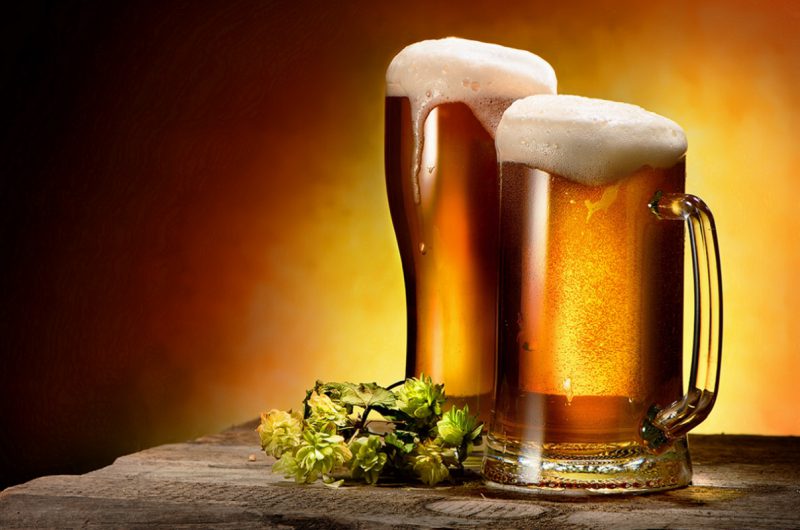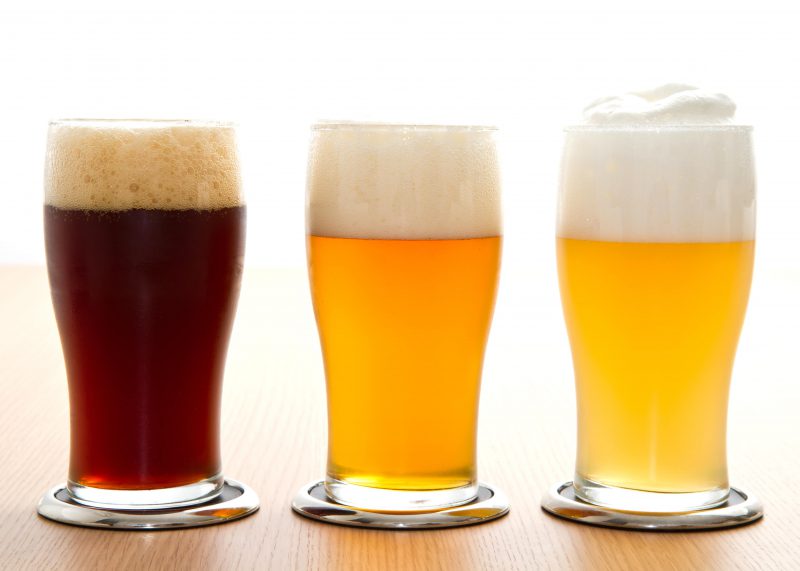All About Craft Beer From the Best Liquor Store Lee’s Summit
Craft Beer – A Tidbit of History
If you are a history buff and a beer enthusiast, you probably already know that beer has been around since before Christ. In fact, the first evidence of actual brewing was found on a tablet that praised the Sumerian Beer Goddess titled A “Hymn to Ninkasi” dating back to 1800 BC. Over the centuries the process of brewing beer has become an art or craft. And today there are thousands of breweries. In the United States alone, there are over 7000 craft breweries which include brewpubs, and microbreweries. Raising the Bar Liquors, your favorite best liquor store Lee’s Summit, dives into the history and terms of craft beer.
Beer Facts Through History
580 – Saint Arnold of Metz aided in helping to end a plague by persuading people that beer was better for them to drink than water because water was impure.
1573 – A beer “purity law” was created in Bavaria, still in effect today, stating that beer could only be made with water, barley and hops. This law was later adjusted to add that both yeast and wheat were permitted.
1716 – The Wayside Inn Tavern opened. Located in Sudbury Massachusetts, the Wayside Inn is the oldest Operating inn in the United states. The Inn is recognized by Longfellow in his book Tales of a Wayside Inn.
1842 – Schaefer Brewing Company was founded. Schaefer Brew Co is said to be the home of the oldest American lager and is still operating today but is now owned by Pabst.
1919-1933 – Prohibition outlawed all sales of alcohol in the United states, which formed the 18th Amendment. The Amendment was later adjusted in 1933 allowing the sale of beer with a 3.2% alcohol level. In 1933 the 24st Amendment repealed the 18th Amendment.
1957 – Michal Jackson noted as the Beer Hunter, had his first beer in Yorkshire. He later wrote the book “The World Guide to Beer” which is said to be a major inspiration for the worlds “beer revolution.”
1965 – Anchor, became the first modern craft brewery.
1982 – Cascade Hops was developed and released in 1972. This was a pivotal moment for brewers in America as Cascade hops became the aroma and flavor for beer in the United States.

Stout

Pale Ale

Lager
A Microbrewery is Born
In the ’70s the hobby of craft brewing started to become popular and thousands of enthusiasts began to create their own home brew. The majority of were hobbyists that made beer for themselves, family and friends. Then in 1976, the first microbrewery was born. The New Albion Brewery located in Sonoma California was created by entrepreneur Jack McAuliffe. McAuliffe was intrigued by the different flavors of beer around the world and was inspired to create is own. Although New Albion Brewery was only open for 6 years, the craft beer trend was on its way to becoming a major player in America.
By the time that the mid 90’s arrived, microbreweries were everywhere with a grown rate of more than 20% annually. Many of the breweries were making a killing and some of them even went public on the Stock Exchange, Samuel Adams 1995. As good as everything appeared in the early years, what goes up must come down. By 1997 the beer industry started seeing a decline in the market. Breweries had to become craftier, creating the industry as we know it to be today. The market share for Craft brewers has doubled since 2012 from 6.5% to roughly 12.7% today in the United States. Local brewing operations have been around for a long time, hundreds of years, and is becoming more popular each year. In fact, Craft brewing is one of the most popular trends in the US today. For all of your favorite craft bers, visit the best liquor store Lee’s Summit today!

Beer Measurements
Like a fine diamond, classified based on cut color and clarity, beer is measured on color, bitterness and gravity. This is for all the beer geeks! Can you imagine the fun you can have by throwing out this tidbit of information the next time you are having beers with friends?
The color of beer is based on the type of grain that is used to create it. There are many different styles of beer and many different colors of beer. Color can range from light pale yellow (straw) to dark rich chocolate (almost black). The color standard for beer runs on a Standard Reference method from 0 to 50. Every number on the scale represents a color. The lighter color the beer the lower the number on the scale and the higher the number, the darker the color of the beer.
All beer has bitterness, but the levels are very different based on the type of beer you are drinking. The bitter taste is from the extraction of alpha acids from the hops during the process of boiling. The bitterness of hops is measured in Units known as International Bittering Units or IBU’s. A light lager may have only a few IBUs whereas an IPA could have over 100 IBUs.
Every beer has viscosity at some level whether it is watery or dense. The Gravity of beer (gravity refers to the density of beer) is measured when it is brewed and is determined based on the about of sugars, or maltose, that is in the beer. Gravity can be measured in a couple of different ways and is very much like temperature scales of Celsius and Fahrenheit. Gravity scales are identified as the specific or original scale which is a measurement of 1.000 to 1.150 and the Balling Scale which is a measurement of 0 to 40.
Raising the Bar Liquors, best liquor store Lee’s Summit, is here for all of your craft beer questions and needs!
Beer Terms For Enthusiests
If you are looking to impress your friends with your knowledge of beer, the best liquor store Lee’s Summit gathered a few terms you can use.
- Aggressive is a term used when beer has a bold aroma or flavor.
- Balanced means the beer has a proportioned about of malt and hops flavor or a balance of bitter and sweet.
- Body refers to the density a beer has.
- Complex references the variation of flavor a beer has.
- Crisp means that the beer has a high level of carbonation and are usually on the dry side.
- Diacetyl is a reference used when beer has a butterscotch flavor or smell.
- Estery means the beer has a fruity aroma.
- Floral refers to the smell of flowers that a beer might have.
- Fruity means that the beer has flavors like different types of fruit.
- Hoppy is used to describe a beer based on the hops it has and can have citrus, spicy or earthy flavors and aromas.
- Malty describes the flavor from malted grain. These beers have a rich and sweet flavor.
- Roasty references a roasted grain flavor.
- Robust means the beer has a rich or full-bodied flavor

